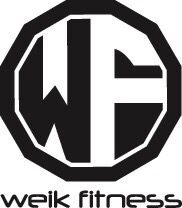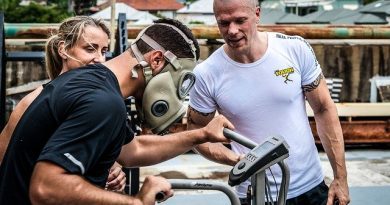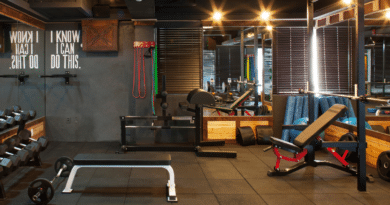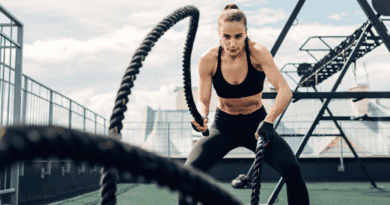Why Recovery Shoes Are a Must for Every Athlete
As an athlete, I’ve experienced that deep fatigue after pushing my body to the limit. You understand the feeling — muscles aching, feet hurting, energy completely depleted. That’s why I was excited to discover recovery shoes.
Now, this isn’t your typical sneaker, walking shoe, or running shoe. These specialized footwear are created to help athletes like us recuperate faster after completing an intense workout or competition.
Throughout my career, I’ve tried numerous recovery methods. But recovery shoes? They’ve been a significant improvement for me. Research supports this, too — studies indicate they can decrease inflammation and improve circulation.
In this article, I’ll dive deeper and explain why recovery shoes are essential for any dedicated athlete. I’ll discuss how specific recovery sneakers for women and men function effectively, the important features to consider, and my best advice for maximizing their benefits.
Table of contents
- Key Takeaways
- Understanding Recovery Shoes
- Importance of Recovery for Athletes
- How Recovery Shoes Enhance Athletic Recovery
- Key Features of Quality Recovery Shoes
- Benefits of Wearing Recovery Shoes
- When and How to Use Recovery Shoes
- Choosing the Right Recovery Shoes
- Common Questions About Recovery Shoes
- Do You Need Recovery Shoes for Active Recovery?
Key Takeaways
- Recovery shoes reduce inflammation, improve circulation, and absorb shock after intense workouts, helping athletes recover faster.
- Key features of quality recovery shoes include cushioning, arch support, adequate toe box space, and durable materials like EVA foam.
- Wearing recovery shoes for 30 minutes post-exercise can cut muscle soreness by up to 50% and speed up muscle repair.
- Both active recovery shoes (for light activity) and passive recovery shoes (for rest) play important roles in an athlete’s recovery routine.
- Recovery running shoes benefit not just pro athletes but also runners, hikers, and workers who spend long hours on their feet, like nurses and retail staff.

Understanding Recovery Shoes
Recovery shoes are a game-changer for athletes looking for a faster recovery time. They help your body bounce back after tough workouts.
Definition and Purpose
Recovery shoes for runners are my go-to for post-workout comfort. They’re special footwear made to help athletes bounce back after tough training. I love how they cradle my feet with soft cushioning and strong arch support.
These shoes aim to ease muscle fatigue and boost blood flow in my legs and feet.
I’ve found that recovery shoes come in many styles. There are slip-on sandals, cozy slides, and even sneaker-like options. The main goal is always the same — to give my feet a break and speed up my body’s healing process.
After a long run, I slip these on and feel instant relief. It’s like giving my feet a mini-vacation!
Types of Recovery Footwear: Shoes, Sandals, Slides
I’ve found that recovery footwear comes in three main types. Each type offers unique benefits for athletes looking to bounce back after intense workouts.
- Recovery Shoes: These are full-coverage options that wrap around your entire foot. They often have thick, cushioned soles to absorb shock and reduce stress on your feet and legs. Many recovery shoes use special foam or gel insoles to massage your feet as you walk.
- Recovery Sandals: Open-toed and airy, these let your feet breathe while still providing support. They usually have contoured footbeds that cradle your arches and heels. Some sandals, like Birkenstocks, are great for plantar fasciitis relief.
- Recovery Slides: These slip-on shoes are easy to put on and take off. They’re perfect for post-workout or lounging at home. Slides often have textured footbeds to stimulate blood flow in your feet. The OOFOS OOAHH SLIDE is a top pick among athletes for its comfort and support.
- Active Recovery Footwear: Some shoes, like the Hoka Clifton 9, are made for light activity during recovery. They have extra cushioning and arch support to protect your feet on easy runs or walks.
- Flip Flops: While not as supportive as other options, some recovery flip flops offer a mix of comfort and breathability. They’re handy for quick trips or beach recovery sessions.
Importance of Recovery for Athletes

Recovery is key for athletes to perform at their best. It helps muscles heal and grow stronger after tough workouts.
Role of Recovery in Athletic Performance
I’ve seen firsthand how crucial recovery is for athletes. It’s not just about resting; it’s about active steps to bounce back stronger. Recovery helps our bodies adapt to the stress of training and competition.
It reduces fatigue, eases soreness, and cuts down on pain after intense activity.
As an athlete, I know that proper recovery boosts my performance. It lets me train harder and more often. Studies show that good recovery practices can improve strength by up to 20% and speed by up to 6%.
That’s why I always make time for recovery, using tools like massage, stretching, and recovery shoes. These methods help me stay at the top of my game and avoid burnout.
Common Recovery Techniques and Tools
Recovery is key for athletes to perform at their best. Here are some common techniques and tools I use to bounce back after tough workouts:
- Ice baths: I soak in cold water for 10-15 minutes to reduce inflammation and muscle soreness. This helps my body recover faster between training sessions.
- Foam rolling: I use a foam roller to massage tight muscles and break up knots. It hurts a bit but really helps loosen things up.
- Compression gear: I wear compression socks or sleeves to boost blood flow and reduce swelling in my legs. This speeds up recovery time.
- Active recovery: On rest days, I do light exercise like easy jogging or swimming. It keeps me moving without too much stress on my body.
- Stretching: I spend 10-15 minutes stretching after workouts to improve flexibility and prevent stiffness. It feels great to loosen up tight muscles.
- Massage: I get sports massages to work out muscle knots and boost blood flow. The hands-on work really helps my muscles recover.
- Sleep: I aim for 8-9 hours of sleep each night. Good sleep is when my body does most of its repair work.
- Nutrition: I eat protein-rich foods and stay hydrated to give my body what it needs to rebuild muscle tissue.
How Recovery Shoes Enhance Athletic Recovery

Recovery shoes work wonders for athletes after tough workouts. They ease sore muscles and boost blood flow, helping you bounce back faster.
1. Reducing Inflammation and Pain
I’ve seen firsthand how recovery shoes can work wonders for reducing inflammation and pain. These special shoes use soft, cushioned materials that cradle your feet gently. This helps take pressure off sore spots and swollen areas after a tough workout.
The extra support also improves blood flow, which speeds up healing. Many athletes I know swear by slipping on recovery shoes right after training to ease aches and pains.
RELATED: 7 Shin Splint Stretches to Help Prevent Shin Pain
The design of recovery footwear targets key pressure points on the feet and legs. The cushioning absorbs shock with each step, easing stress on joints and muscles. Some styles even have built-in massage features to further soothe tired feet.
By wearing these shoes, you give your body a chance to bounce back faster between workouts. It’s an easy way to show your feet some love and keep pain at bay.
2. Improving Circulation and Range of Motion
Recovery shoes do wonders for blood flow and movement. I’ve seen how they boost circulation in feet and legs after a tough workout. The soft cushioning and supportive footbeds help blood move better.
This improved flow can make your feet and ankles more flexible. My own experience shows these shoes cut down on stiffness fast. They’ve helped me get back to training quicker many times.
I love how recovery footwear aids healing. The design helps reduce swelling in feet and ankles. This means less pain and more mobility for athletes. Studies show better blood flow speeds up muscle repair, too.
I’ve felt the difference myself — my feet feel fresher and more limber after wearing them. For any fitness buff, these shoes are a great tool to bounce back faster.
3. Absorbing Shock and Reducing Impact
I’ve seen how recovery shoes work wonders for shock absorption. These special shoes have cushioning that cuts down on the impact your feet feel. This is key for athletes who put a lot of stress on their feet.
The shoes’ design helps spread out the force from each step, making it easier on your joints and muscles.
Recovery footwear isn’t just comfy — it’s smart tech for your feet. The soft fabrics and arch support work together to lessen strain during activity. I’ve found that wearing these after a hard workout helps my feet bounce back faster.
They give my feet a break while still letting me move around, which is great for active recovery.
Key Features of Quality Recovery Shoes
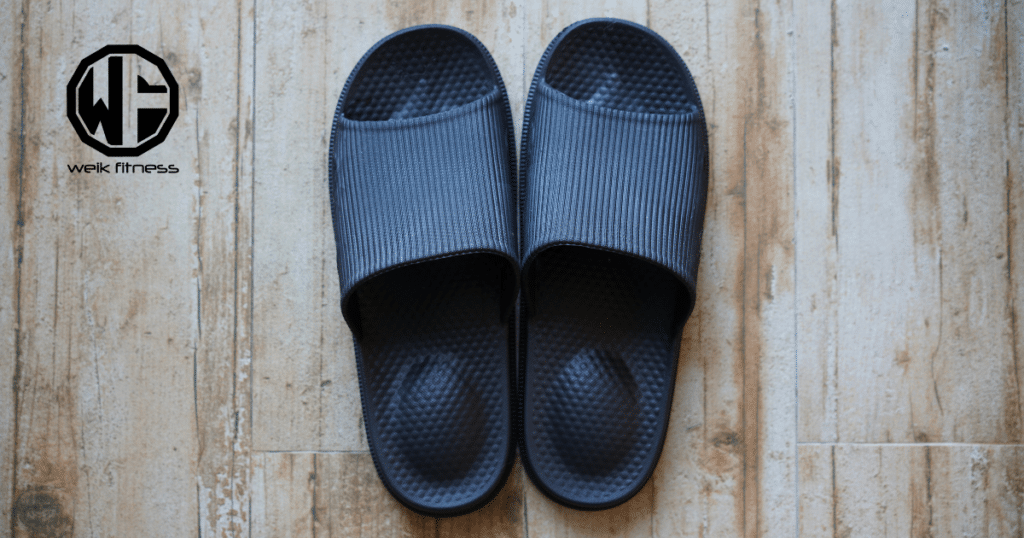
Quality recovery shoes have key features that set them apart. These features boost comfort and aid in muscle recovery after intense workouts.
1. Cushioning and Arch Support
I’ve found that good recovery shoes have two key features: cushioning and arch support. The cushioning absorbs shock and eases strain on my feet. Most recovery shoes use thick midsoles made of soft foam.
This helps reduce impact when I walk. The arch support is equally important. It keeps my feet aligned properly and takes pressure off my arches. Kane recovery shoes, for example, have special footbeds that support arches and absorb shock.
These features make a big difference in how my feet feel after a long run or workout.
Recovery footwear offers more comfort than normal shoes. The cushioning is usually much thicker and softer. The arch support is also stronger to really cradle my feet. Some brands even use special fabrics that feel great against my skin.
All of this adds up to shoes that truly pamper my tired feet. After a tough training session, slipping into recovery shoes feels amazing. My feet can finally relax and start to bounce back.
2. Adequate Toe Box Space
I’ve found that a roomy toe box is key in recovery shoes. It lets my toes spread out, which cuts down on blisters and injuries. This extra space also helps when my feet swell after a tough workout.
The best recovery footwear I’ve tried has a wider toe box that fits various foot sizes. I’ve seen options that range from M3/W5 to M18/W20, so there’s something for everyone.
My feet feel much better in shoes with ample toe room. After a long run, I slip into these comfy shoes and feel instant relief. The space allows my toes to move freely, easing any pain or swelling.
It’s like giving my feet a mini-vacation after pushing them hard. Plus, the wide range of sizes means I can always find the perfect fit for my post-workout needs.
3. Material and Build Quality
I’ve seen many recovery shoes, and their quality matters a lot. Good ones use tough, light materials like EVA foam. This foam comes from sugarcane, making it eco-friendly. The best shoes are built to last and can handle daily wear.
They’re also easy to clean and dry fast.
Quality recovery shoes have strong soles that cushion your feet. The tops are made of breathable stuff to keep your feet cool. Some even use special fabrics that fight odors. I love that these shoes are tough enough for outdoor use but comfy enough for inside, too.
Benefits of Wearing Recovery Shoes

Recovery shoes offer many perks for athletes. They help muscles bounce back faster, ease foot strain, and boost comfort after workouts. These shoes also aid in fixing posture and walking style.
1. Promote Faster Muscle Recovery
I’ve seen firsthand how recovery shoes can speed up muscle healing. These special shoes boost blood flow to tired muscles, which helps them repair faster. They also cut down on swelling and pain after a tough workout.
I’ve found that wearing recovery shoes for just 30 minutes post-exercise can make a big difference in how I feel the next day.
Recovery footwear isn’t just comfy — it’s backed by science. Studies show that these shoes can reduce muscle soreness by up to 50%. They work by taking pressure off key areas of the foot, letting blood and oxygen flow more freely.
This extra circulation helps flush out waste products from exercise, leading to quicker bounce-back times for athletes.
2. Provide Essential Arch Support
Recovery shoes give my feet the support they need. The arch support in these shoes helps my feet feel better after a long day. I’ve noticed less pain and fatigue when I wear them. The cushioning cradles my arches, taking pressure off tired muscles.
These shoes aren’t just comfy — they’re good for my feet, too. The arch support helps keep my feet in a healthy position. This can prevent issues like plantar fasciitis. For anyone on their feet a lot, recovery shoes are a smart choice.
They provide essential care for hardworking feet.
3. Enhance Comfort and Relaxation Post-Workout
I love how recovery shoes boost comfort after a tough workout. These special shoes cradle my feet in soft cushioning, easing the strain from exercise. The supportive footbeds and plush materials help my muscles relax and start to heal.
It’s like giving my feet a gentle hug while they recover.
Recovery footwear also helps me unwind mentally. Slipping them on signals to my body that it’s time to rest and recharge. The cozy feel melts away tension, letting me fully relax. This combo of physical and mental ease speeds up my recovery, getting me ready for my next training session faster.
4. Improve Posture and Gait
Recovery shoes play a key role in improving posture and gait. They offer more arch support and cushioning than regular footwear. This extra support helps align the body better when standing or walking.
I’ve found that wearing these shoes can boost overall foot mobility. They work to ease muscle strain and tendon stress, leading to a smoother walk.
The design of recovery shoes aids in better body stance and movement. The comfy fabrics and cushioned soles make a big difference. They help spread weight evenly across the foot. This can fix issues with how we walk or stand.
For athletes, this means less wear on joints and muscles. It’s a simple way to care for our feet and body after tough workouts.
When and How to Use Recovery Shoes

Recovery shoes work best right after workouts or long days on your feet. I slip mine on after runs to ease foot strain and boost blood flow.
Optimal Times to Wear Recovery Shoes
I put on my recovery shoes right after my tough workouts. They help my feet feel better fast. I also wear them when I’ve been on my feet all day. The soft cushions and good support ease my tired muscles.
Sometimes, I slip them on in the evening to help my feet relax. It’s like giving my feet a nice massage after a long day.
These shoes are great for active people who need quick recovery. I’ve found they work well for runners, gym-goers, and folks who stand a lot at work. The key is to use them when your feet need a break.
This could be after sports, during rest days, or anytime your feet feel sore. Using them at these times helps your feet bounce back faster.
Tips for Maximizing Benefits
I’ve found some great ways to get the most out of recovery shoes. First, I put them on right after my workout when my feet need the most TLC. This helps reduce swelling fast. I also wear them around the house for an hour or two each evening.
It’s like giving my feet a mini-massage after a long day.
For the best results, I make sure my recovery shoes fit just right — not too tight or loose. I rotate between two pairs to keep them fresh and working well. And I always store them in a cool, dry spot to make them last longer.
These simple steps have really boosted how much my feet and legs benefit from recovery footwear.
Choosing the Right Recovery Shoes
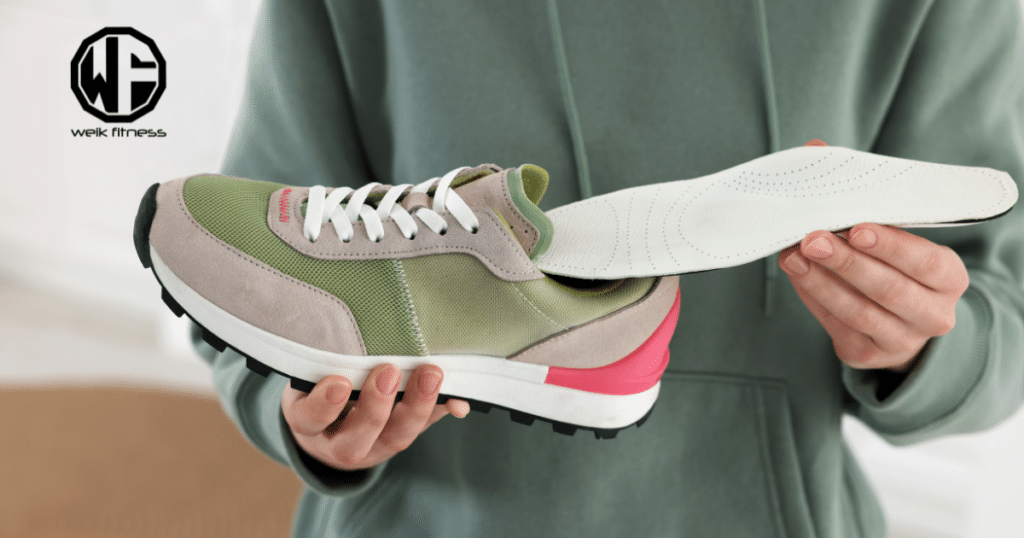
Picking the best recovery shoes can make a big difference in how well you bounce back after a workout. I’ll share tips to help you find the right pair for your needs and comfort.
Active vs. Passive Recovery Footwear
I’ve found that active and passive recovery footwear serve different needs for athletes. Active recovery shoes, like the HOKA Clifton 9, are great for light workouts or easy runs. They offer comfort and support when I’m moving.
Passive recovery shoes, such as the OOFOS OOAHH SLIDE, are perfect for rest days. These slides absorb impact and support my arches when I’m not exercising.
I prefer using active recovery shoes during my cool-down jogs or walks after intense training. For total rest, I slip on passive recovery footwear. The OOFOS slides, for example, help ease foot and leg pain with their shock-absorbing design.
Both types play a key role in my recovery routine, helping me bounce back faster for my next workout.
Assessing Your Specific Needs and Condition
I know how important it is to pick the right recovery shoes. My feet often ache after long runs, so I’ve learned to assess my needs carefully. First, I look at where I feel the most pain or soreness.
Is it in my arches, heels, or the balls of my feet? This helps me choose shoes with the right support. Then, I think about my activities. Do I need something for post-run recovery or all-day comfort? This guides me to pick between active or passive recovery footwear.
Next, I consider any foot issues I have, like flat feet or plantar fasciitis. These conditions need special features in recovery shoes. For example, I need extra arch support and cushioning for my flat feet.
Lastly, I pay attention to how my feet feel in different shoes. The right pair should feel like walking on a cloud, easing my aches and pains. By taking these steps, I ensure my recovery shoes meet my unique needs and boost my overall foot health.
Considerations for Fit and Comfort
Recovery shoes must fit well and feel comfy. I’ll share key points to keep in mind when picking the right pair.
- Size matters: Choose shoes that fit snugly but don’t pinch. A good rule is to have about a thumb’s width of space at the toe.
- Arch support: Look for shoes with proper arch support to ease foot strain. This helps reduce pain and boosts comfort.
- Cushioning: Opt for shoes with ample cushioning to absorb shock. This eases stress on your feet and legs after a workout.
- Toe box space: Ensure there’s enough room for your toes to move freely. This prevents blisters and allows for natural foot movement.
- Material quality: Pick shoes made from breathable, durable materials. This keeps your feet cool and dry while ensuring the shoes last longer.
- Adjustable straps: Sandals or slides with adjustable straps offer a custom fit. This lets you tighten or loosen as needed for optimal comfort.
- Weight: Lighter shoes are often more comfy for post-workout wear. They put less strain on tired muscles and joints.
- Heel cup: A deep heel cup helps stabilize your foot. This improves overall fit and reduces the risk of slipping inside the shoe.
- Flexibility: Choose shoes that bend easily at the ball of the foot. This allows for natural foot movement and enhances comfort.
- Try before you buy: If possible, test the shoes by walking around. This helps you gauge the fit and comfort level firsthand.
Common Questions About Recovery Shoes
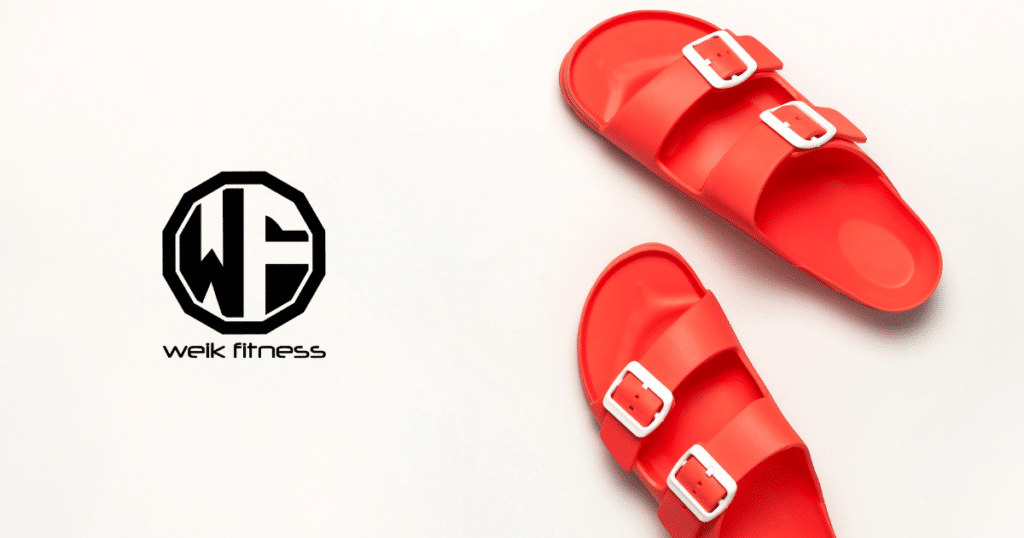
Recovery shoes raise questions. Many wonder about their daily use, who benefits most, and if they prevent injuries.
This sentence introduces common questions about recovery shoes without repeating the list. It encourages readers to continue for answers, following the given writing styles and instructions.
1. Can They Be Worn All Day?
I’ve worn recovery shoes all day, and they’re great for comfort. These shoes have extra cushioning and support that make them perfect for long hours. I’ve found they help my feet feel less tired after a full day.
Many athletes and people who stand a lot use them beyond workouts. The increased arch support and soft soles make a big difference in how my feet feel at day’s end.
Recovery shoes are designed for all-day wear. They offer more comfort than regular shoes, which is key for busy days. I’ve noticed they reduce stress on my feet when I’m active or standing for hours.
The shoes’ features, like a roomy toe box and shock-absorbing soles, keep my feet happy. For anyone needing foot relief, these shoes are a smart choice for daily use.
2. Who Benefits Most from Recovery Shoes?
Recovery shoes offer great benefits for many people. As an athlete, I’ve found them most helpful after intense workouts. They ease my sore muscles and help me bounce back faster. But it’s not just pro athletes who gain from these shoes.
Anyone who spends long hours on their feet can find relief. This includes nurses, teachers, and retail workers. The cushioning and support in recovery footwear reduces stress on feet and legs.
I’ve noticed that runners and hikers love recovery shoes, too. After pounding the pavement or trails, these shoes give their feet a much-needed break. People with foot issues like plantar fasciitis also find comfort in recovery footwear.
The arch support and shock absorption ease pain and promote healing. Even casual gym-goers can enjoy the perks of recovery shoes. They help soothe tired feet after a tough workout session.
3. Do Recovery Shoes Help Prevent Injuries?
I’ve seen recovery shoes make a big difference in preventing injuries. These special shoes give more support and cushion than regular ones. They help tired feet and legs feel better after hard workouts.

For runners and other athletes, wearing recovery shoes can lower the chance of getting hurt. The extra comfort and support lets muscles and joints heal faster.
Recovery footwear works in a few key ways to stop injuries. The soft cushioning absorbs shock and eases stress on feet and legs. More arch support helps with proper foot alignment.
Comfy fabrics reduce friction that can cause blisters. All these features add up to less strain on the body. That means a lower risk of common sports injuries like shin splints or plantar fasciitis.
Do You Need Recovery Shoes for Active Recovery?
Recovery shoes are a game-changer for athletes. They help our bodies bounce back faster after tough workouts. These shoes ease pain, boost blood flow, and support our feet. I’ve seen firsthand how they can make a big difference in how we feel and perform.
RELATED: Get More With Minimalist Shoes
Every athlete should add recovery shoes to their gear for better health and faster healing.


*Disclosure: This article may contain affiliate links or ads, which means we earn a small commission at no extra cost to you if you make a purchase through these links. These commissions help support the operation and maintenance of our website, allowing us to continue producing free valuable content. Your support is genuinely appreciated, whether you choose to use our links or not. Thank you for being a part of our community and enjoying our content.
PLEASE CONSIDER SHARING THIS ON YOUR SOCIAL MEDIA TO HELP OTHERS LEARN MORE ABOUT THIS TOPIC.
